Cheap Travel: Costa Rica After the Rain
I knew Costa Rica had changing seasons, but I didn’t realize the changes in the landscape would be so extreme. When we flew to Guanacaste, Costa Rica last March, I was surprised by how little green there was. Much like our Northeastern winters, most of the trees were bare, and the grasses were all dried up. But November is at the end of the wet season, and we arrived to lush green fields and forests.
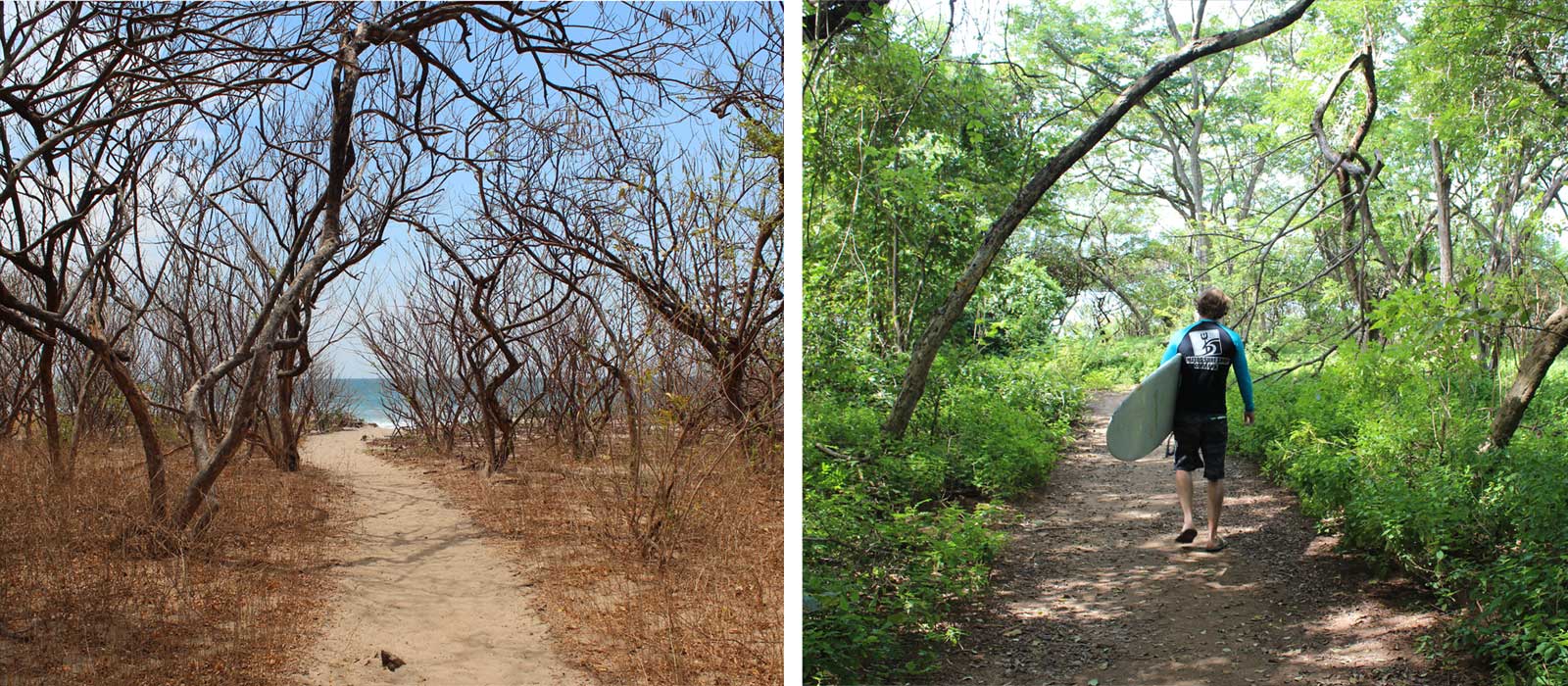 Dry Season vs Wet Season in Guanacaste, Costa Rica
Dry Season vs Wet Season in Guanacaste, Costa Rica
Not only was it more green and lush, but the weather was also a bit more pleasant and cooler. It was not as dusty, and with some clouds around, the sun wasn’t as overbearing. We also sensed a lot more activity from the wildlife. The howler monkeys were really going at it – they sounded like a cross between an angry Rottweiler and a hungry boar grunting away. Many birds migrate down from the mountains during the wet season and we heard them singing and rustling around. But while we could hear a lot more birds and monkeys, I think we might have seen less of them with all the foliage as camouflage.
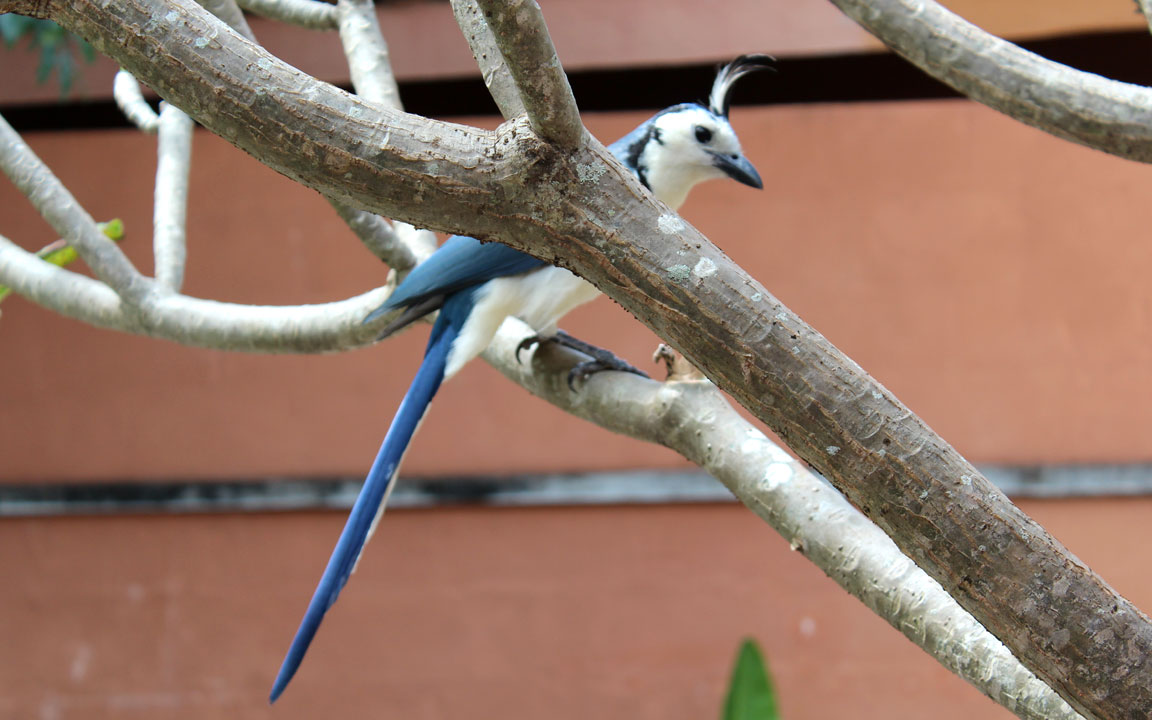 This guy was scoping out our breakfast.
This guy was scoping out our breakfast.
We kept a nice lazy pace, spending most of our time surfing, boogie boarding, walking the beach, reading books by the pool, napping, and eating out. Normally we don’t dine out much, but when we’re in Costa Rica, we visit a soda at least once a day – the local food is just too damn good and really cheap. You can get a casado, which is a plate with your choice of meat, rice, beans and salad for $6 including tax and tip. Some meals even have fresh juices included. We ate at a bunch of local sodas and our bills were between $12 and $15 for the two of us.
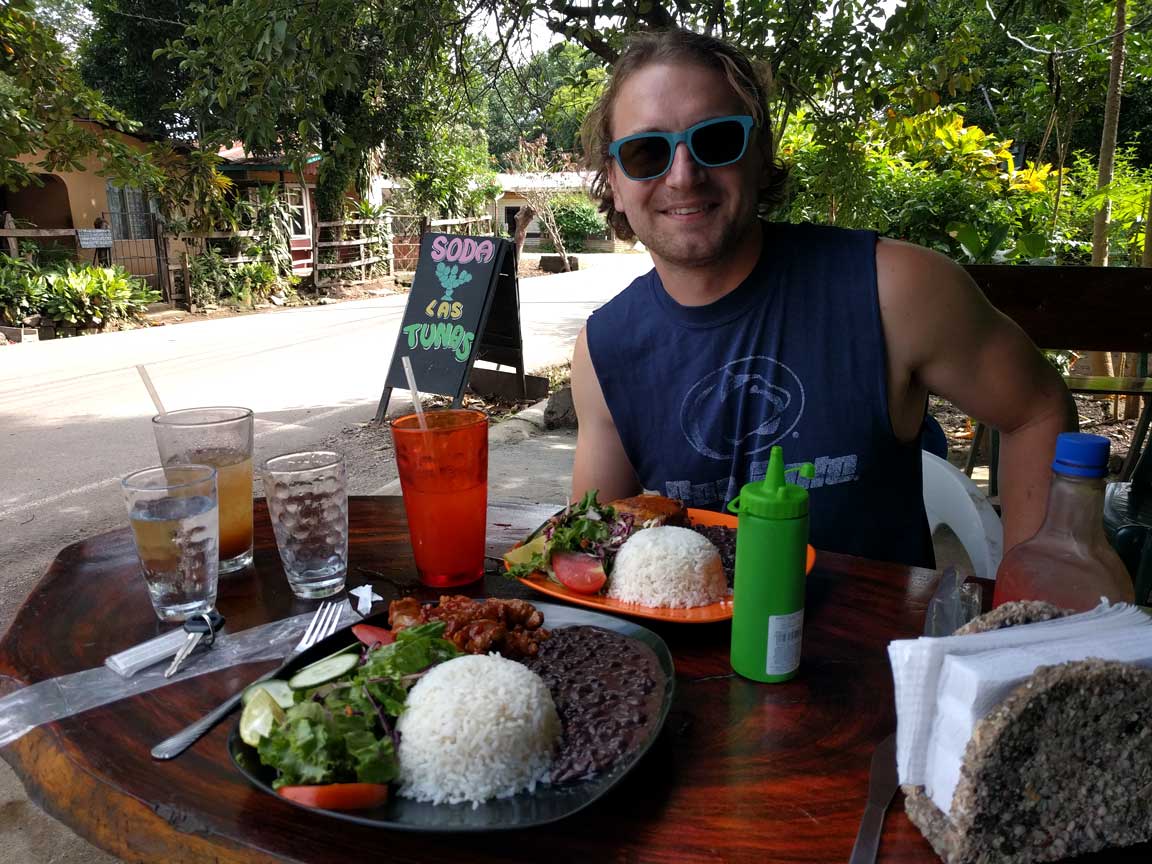 Lunch for two : $12
Lunch for two : $12
We did cook some meals including breakfast everyday. Things like eggs, papaya, and avocados are cheap. We visited a farmers’ market and got some lychees and a passion fruit. I’d only had passion fruit once before in Hawaii – this one was bigger and sweeter. You just pop it open and suck out the pulp, seeds and all. It doesn’t look like much, but the juicy tropical fruitiness is unreal.
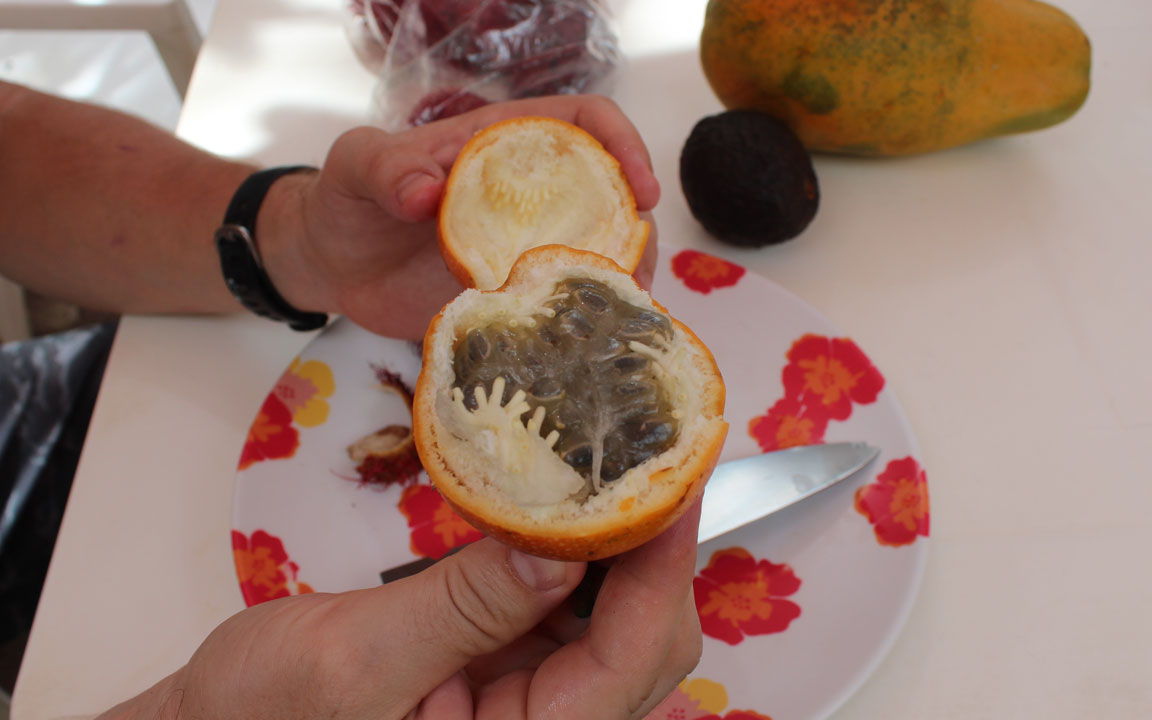 Fresh passion fruit
Fresh passion fruit
Trying new fruits is one of our favorite activities, and we were lucky to have a lime tree on the property with plenty of ripe limes. I thought we would throw some slices in our beers, but the limes were surprisingly different from what we’re used to. Instead of being sour, they had a mild flavor and were even a bit sweet. They almost tasted like a very lightly sweetened lemonade.
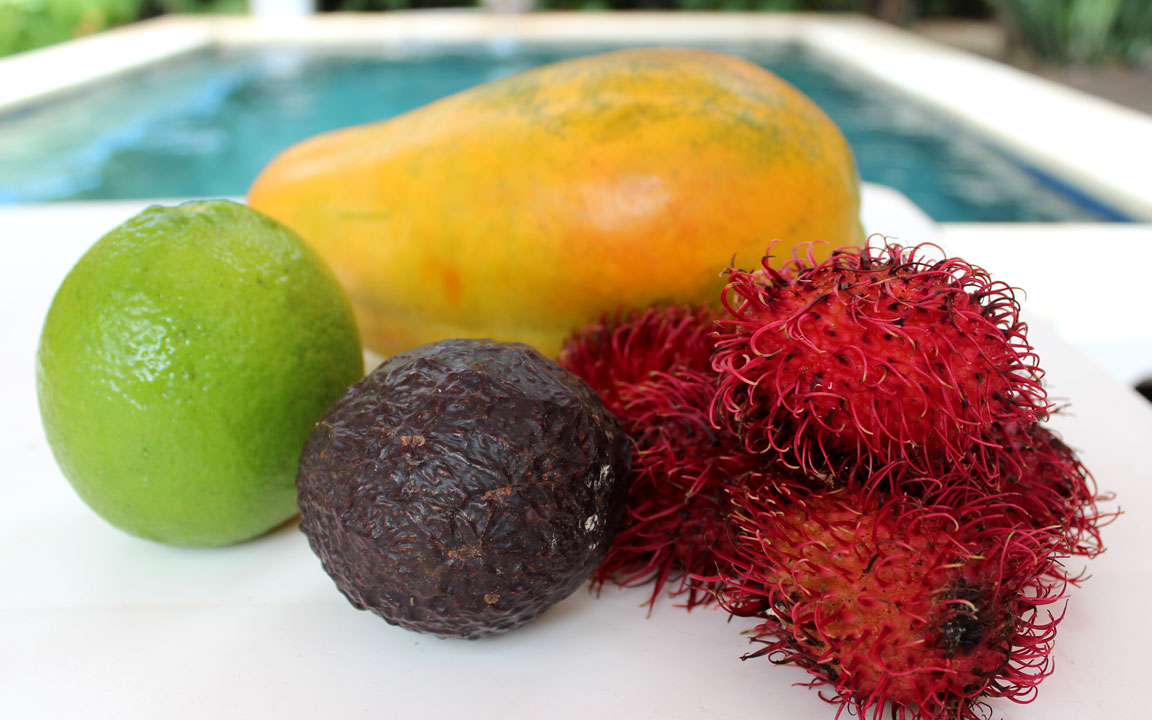
We didn’t exchange any money during the trip. Most places took credit cards, and the rest of them – including the farmers’ market – allowed us to pay with US Dollars. They typically exchange at a rate of 500 Colones to 1 US Dollar. The exchange rate at the time was 560 Colones to a dollar but we would have lost some money at the airport exchange or ATM fees anyway. We just made sure to take a lot of dollar bills so we could make our own change, otherwise it was convenient to just pay with credit cards and the good old USD.
Towards the end of out trip, we started getting news about Hurricane Otto advancing toward Costa Rica. It was predicted to hit Guanacaste on Thanksgiving day – the day we were scheduled to fly out. American Airlines issued a travel warning and offered to change our tickets at no charge. We didn’t want to risk getting stuck in the storm, so we cut our trip from 8 days to 7 days. It started raining when we left, and I don’t think it would have been worth the risk if we stayed another day.
Are bugs in Costa Rica worse during the wet season?
When we were in Guanacaste during the dry season, the ants were unavoidable, especially in bathrooms. We had to be careful about keeping our food in sealed containers or in the fridge, and there were troops of good sized ants that seemed to live in our toilet. It took some getting used to, but the ants in the potty don’t disturb you or bite your butt while you’re crapping. And it was fascinating how well they could swim – almost running on top of the water – if you happened to catch one in a flush. This was common throughout the places we visited and just something we got used to.
When we returned during the wet season, I was expecting the bugs to be much more invasive, but I was pleasantly surprised. There were hardly any ants in our bathroom, and there weren’t as many ants going after our food. I realized that the bugs were all coming into our living space during the dry season because there wasn’t any water outside and our toilet was like an oasis in a desert. Now that it was raining, they could find better resources outside.
While there were less ants to deal with, there were some mosquitoes this time. With the rain leaving lots of puddles, I was sure the mosquitoes would be so thick, they would blot out the sun. But we only encountered a few at dusk and they would dissipate when it got dark. We did get bitten, but it was never the type of onslaught that could chase us indoors.
Do you need a 4×4 in Costa Rica?
Last time, we rented an economy vehicle – a BYD F0 which was a tiny car with tiny wheels. But seeing the locals driving around in their 2 wheel drive compact cars gave us confidence. While the ride was bumpy, and we did bottom out a several times, we made it through the few dirt roads we had to navigate without any issues. But that was during dry season.
A day before we left on our trip, we got a message from our Airbnb host saying the dirt road leading to the house was in really bad condition. We had once again booked an economy car, but we knew our host was not one to mess around. Rather than taking a risk, we scrambled last minute and changed our reservation to a mid sized 4X4 SUV.
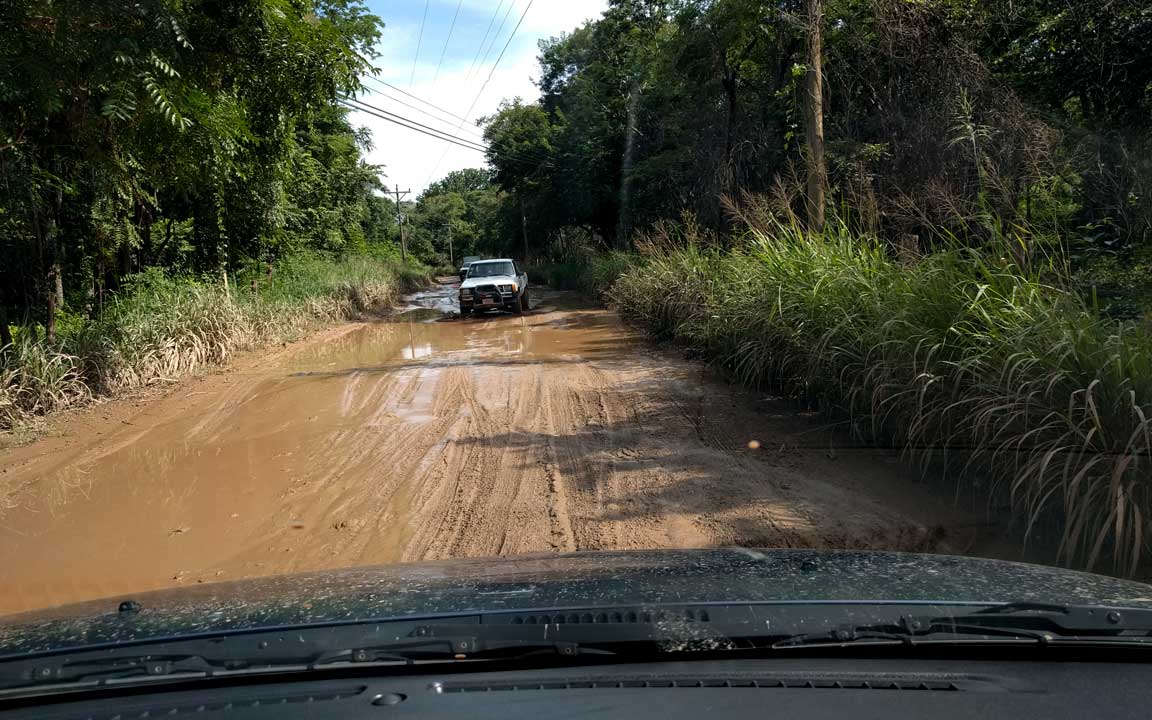 The end of rainy season
The end of rainy season
When we arrived in Playa Grande, it quickly became clear that our host was right about the road. It was a mess. I have to admit though, I was a bit giddy – I had a 4X4 and this road was looking like an off-road mud course. I kept the vehicle moving at a good pace as we made our way down the road, then we got to a larger puddle. It looked similar to the others, so I just got the momentum going and rolled on into it. We got a bit of a surprise when we took a nose dive and a wave of muddy water came up over our windshield. The center of the puddle must have been closer to 2 ft deep. That was cool, I thought, and hoped the thing didn’t suck up any of the water.
We ended up making it to the house just fine, and I didn’t get any water in the car. After making a few more trips in and out, we did see a few locals make the run in their tiny cars. They seemed to manage the road just fine. The key is, they knew where all the deep holes were. Without knowing how deep the puddles were, I was much more comfortable having some extra clearance.
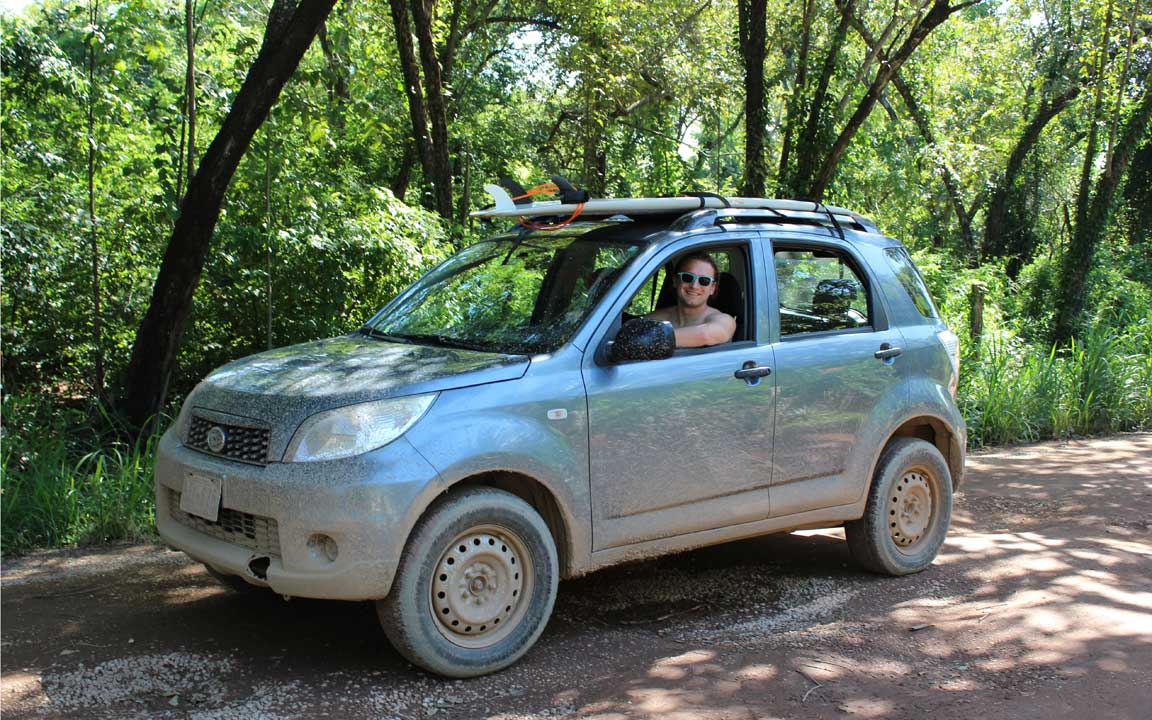 Things got a bit messy.
Things got a bit messy.
We had just under a mile of dirt road to navigate getting in and out of our place. If we go back in the dry season, we’ll just rent whatever is cheapest. But if we go back when it’s raining or has rained recently, we’ll get something that has a bit more clearance. It’s hard to tell which puddles are hiding potholes that can swallow a small wheel.
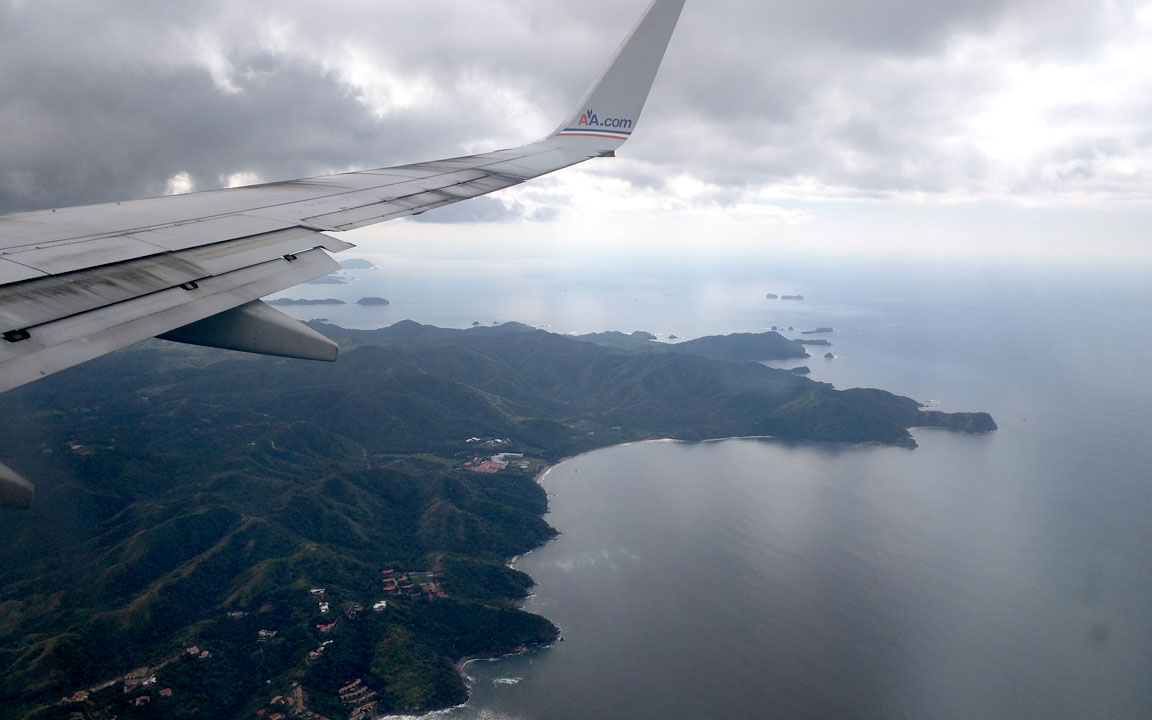
How to get free flights to Costa Rica.
I was able to book our tickets using my American Airlines miles. Most of these miles came from a signup bonus I got when I applied for an AAdvantage card. For two tickets from JFK to Liberia, I used 70,000 miles and paid $160 in fees. They were not direct flights, but only had a short layover in Miami.
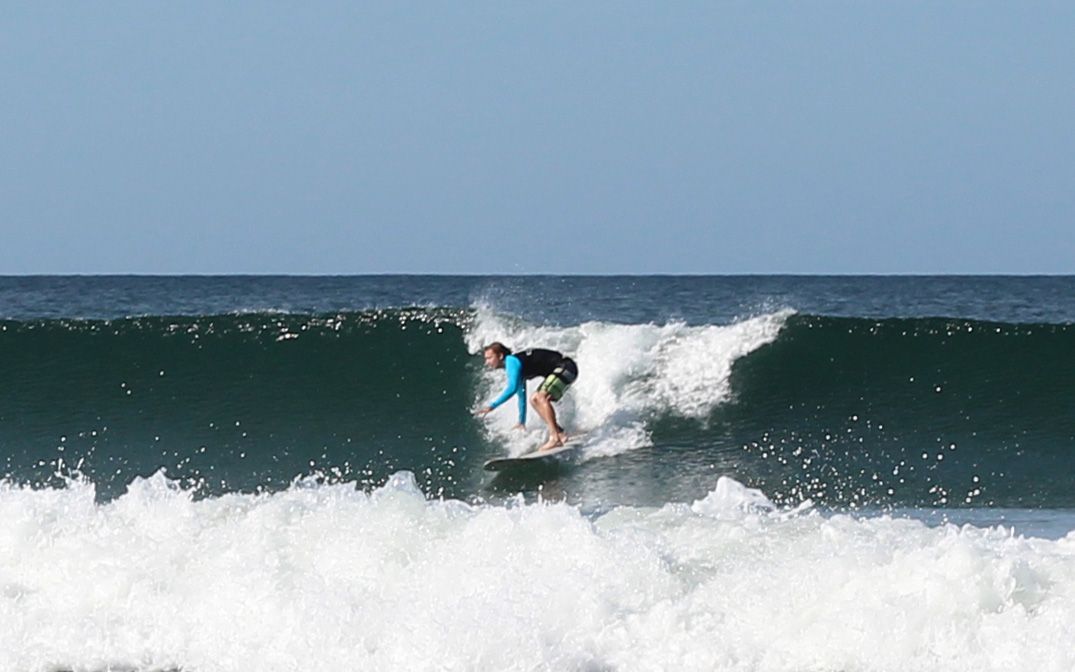
How much did our surfing trip to Costa Rica cost?
With a little bit of travel hacking, our 8 7 day vacation to Costa Rica cost $160 in fees for flights + $140 for car rental + $600 for our room + $120 to park our car near JFK. If you count the extra dining out at $15 a day, and surfboard rental at $15 a day – that’s another $210 we spent on activities. So for about $1230 total, or $615 per person, we had a pretty badass surfing vacation in Central America. The only problem is, I now have a pretty serious case of surfing withdrawal. Maybe we need to move to Costa Rica…